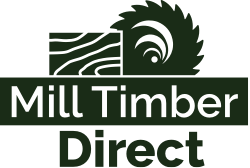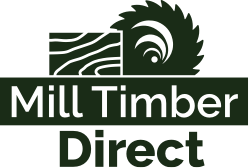Step by Step – How to Build a Deck

Like all DIY projects, firstly you need to have the correct tools and materials for the job! To start, let's look at the tools you'll need to start your decking project:
Tools
- Tape measure
- Hammer
- Drill
- Jigsaw
- Gloves
- Spirit level
- Screwdrivers
- Battery drill/ screwdriver
- Workbench
Now you have the correct tools, the next step is using high quality materials that ensure the longevity of your decking.
Materials
- Weed control fabric
- Wood for framework
- 50mm number-8 decking screws
- Wood preserver
- 25mmx50mm wood for stakes
- Decking
- Slabs
With everything in order, it's time to start your decking project!
Step 1. Preparation of your decking site
Firstly you need to figure out where you would like to build your deck and prepare the chosen area by compressing any loose soil. This can be done using a heavy roller or a compactor machine.
Then clear away any rocks, weeds and vegetation. Then cut out and lay your weed control fabric over the entire site to further prevent unwanted greenery growing underneath your deck.
Place concrete slabs at the corners and the centre of where you want your deck, as well as in the areas to support the joists. This is essential as you need to provide enough load-bearing support for your frame, whilst keeping your decking frame off the damp ground.
Step 2. Building the decking frame
The next step is to begin building the outer frame. To do this, fix joists together with either bolts or galvanised screws, along the perimeter of your decking site. The frame should allow the decking to overhang by the same thickness of a board, depending on what boards you use. It is advised to also use wood preservative on all sawn wood to enhance the lifespan of your deck and keep it looking at its best!
The joists can now be fixed to the inside of the frame, having 400mm spacing between each joist. Once the joists have been fixed to your frame securely using bolts or galvanised screws, you should check your deck is level using a spirit level. Nobody wants a wonky deck!
If your deck is level, next measure, cut and fix noggins to your frame staggered along the centre line to add extra support.
Step 3. Securing decking to the ground/building
Once the frame is complete, create pointed wooden stakes and hammer them into 8 different points within the frame, starting with the corners. Then connect the stakes to your frame using screws to secure the frame in place, ensuring the stability of your decking. Remember to treat the new wooden stakes with wood preserver.
If you are attaching your decking to your home, this can be done using a ledger board. The ledger board should be the same length as your deck. By now you should know the height of your deck and at what point it should be attached to the wall of your home. Drill holes in the centre of your ledger boards with equal spacing, then place it in the correct position on the wall. Using a pencil mark the holes you have made in the ledger board, then drill 7cm holes into the wall using the template you have created. Hammer anchor bolts into the holes, then use lag bolts to firmly fix the ledger board to the wall. Once secure, you can fix your deck frame to the ledger board, and move onto the next step!
Step 4. Laying the decking boards
Top Tips:
- Before starting your decking project, let your decking boards dry out for roughly a week before use. Allowing the boards to reduce in moisture content, therefore shrinking down to their normal size.
- Place all the decking boards in correct position within your frame, before fixing any into place.
- For consistent gapping cut a piece of timber at your desired gap length and place it between each board before fixing.
- If installing hardwood, wood-plastic composite or PVC boards, pre-drill your holes, this will prevent cracks or splints in the decking.
Now your deck should be structurally sound and fixed in place to the ground/house. Its time to lay your decking boards!
Start by laying your first board along the edge of the frame closest to the building. When laying your next board, remember to leave a small gap as decking boards can expand when wet. However, make sure the gap isn’t too large as timber decking can also shrink, meaning the gaps can increase. A 3-5mm gap is usually ideal.
When fixing the decking boards to the frame, fix the boards at the corners and at the centre where they pass over noggins and joists. Continue to fix your decking boards until you reach the opposite edge of your frame. Once you have reached the edge you may have to measure and cut a board for it to fit the frame perfectly. You can do this in two different ways. Either over-lap the decking frame, then cut the board after it has been fixed or you can stagger your decking boards (leaving larger gaps than usual). Staggering decking boards is the more risky option as if the wood shrinks the already larger than normal gaps will become even bigger.
The final part of laying your decking boards is the edging also know as the deck frame facing. Edging the deck involves covering all the remaining visible edges with decking boards for a clean complete look! Do this by measuring the outer edge of your deck frame and subtly fix deck boards flush along the outside.








